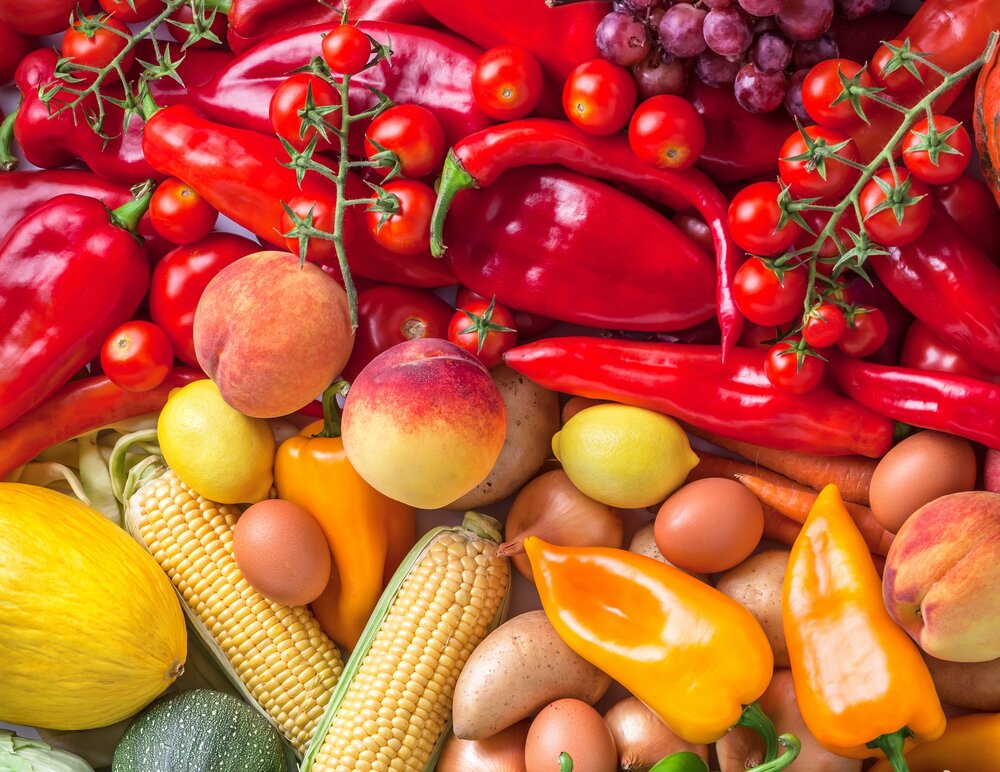If you want a healthy golden glow without jetting off on a sunshine break, just eat more fruit and vegetables, apparently. New research shows eating a healthy diet packed with plant-based foods increases skin yellowness, making it look healthier and more attractive.
And what’s more, that golden glow – which is due to the accumulation of coloured plant pigments called carotenoids in the skin – means you’re full of nutrients which help the body fight disease and boost immunity – which sounds good during the coronavirus crisis.
Researchers at the University of St Andrews found skin yellowness indicates health by showing the body has enough antioxidant reserves and low levels of oxidative toxins. As well as a diet high in fruit and vegetables, they found high fitness and low body fat were also assoc
iated with a higher skin yellowness.
The golden glow can be caused by more than 600 different types of carotenoids, such as orange carotene from carrots and red lycopene from tomatoes. They play an important role as antioxidants, which help protect against DNA damage from the oxidative toxins which build up in the body through the stresses of everyday life. Antioxidants protect against damage by neutralising toxins, and they’re thought to help fight health problems including heart disease and cancer.
In addition, some carotenoids, like the beta-carotene found in foods such as carrots, sweet potatoes and dark leafy greens like kale and spinach, can be converted by the body into the form of vitamin A that maintains normal vision, healthy skin and a strong immune system.
Dietitian Dr Carrie Ruxton explains: “Carotenoids are a plant nutrient and they’re antioxidants, so they protect cells from damage. They’re great to have in your diet, but like many of the other valuable plant compounds, you don’t find them on food labels.
“Along with other plant compounds, they might be the reason fruit and vegetables are so good for us.”
Here’s how to get more.
Add them to your diet
Humans can’t make carotenoids themselves, they have to be obtained from the diet. “Get carotenoids from natural fruit and vegetables, not from a supplement,” advises Ruxton. “That way they work in combination with other food and nutrients.”
Go for red, orange and yellow foods
Foods containing carotenoids are often, but not always, red, yellow or orange, and include carrots, sweet potatoes, watermelon, cantaloupe and orange-fleshed honeydew melons , mangoes, tomatoes, bell peppers, oranges, papaya and yams. They’re also in green leafy veg like spinach and kale.
Eat them with healthy fats
Carotenoids are fat-soluble, meaning the body absorbs them better when they’re eaten with fat, preferably the healthy variety. So mix carotenoid-rich foods with mono and polyunsaturated fats found in oily fish like salmon, nuts and seeds, avocado, tofu, and omega 3-enriched products like eggs, or use an olive oil-based salad dressing, drizzle olive oil over food, or cook with olive oil.
Cook and chop them
Unlike some other vegetables, cooking and chopping carotenoid-rich foods increases the strength of the nutrients when they enter the bloodstream. This is especially true of tomatoes, for instance.
Use them in a stew
A 2014 Brazilian study found significant reductions of carotenoid levels after microwaving and frying foods, and an increase after stewing. But try not to boil carotenoid-rich foods – boiling them apparently leads to some of the nutrients leaching out into the cooking water.





